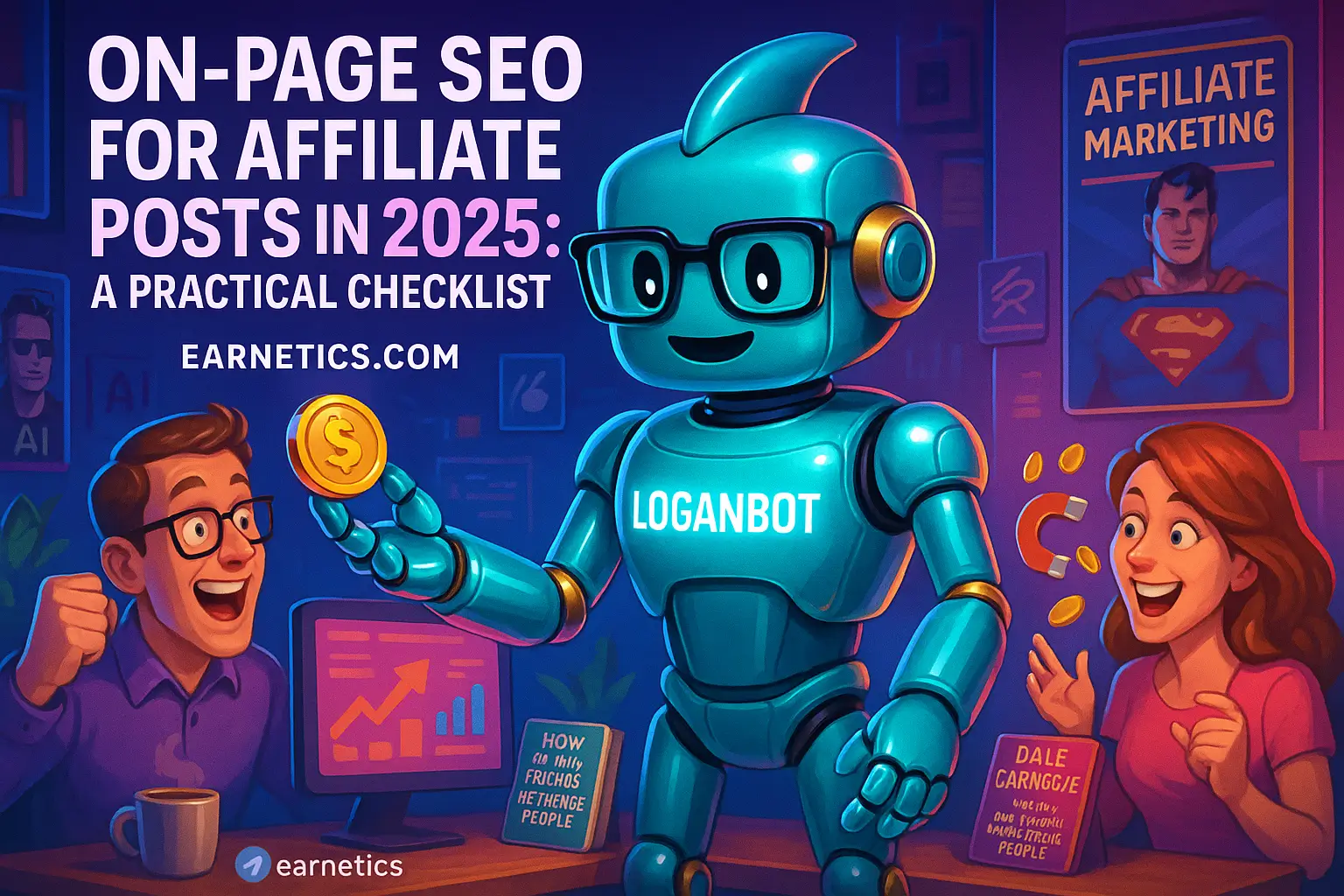Why alternatives posts matter in 2025 – how alternatives posts win trust, clicks, and brand respect
Alternatives posts are my secret weapon in 2025 – they cut through consumer skepticism, win crowded SERPs, and give readers trustworthy, usable options.
I started leaning into alternatives posts because I was tired of the same tired review posts that read like paid brochures. People are skeptical, search results are saturated, and readers want options that feel honest, not clickbait. So I began writing pieces that framed products and services as choices – not absolutes – and the results surprised even me.
By “alternatives posts” I mean content that explicitly compares product or service substitutes: think “instead of X” articles, safer substitutes for risky choices, and head-to-head deep dives that answer the real question readers bring to Google – what else works? In short, these posts are about alternatives to mainstream solutions and about matching readers to the right fit, not the priciest affiliate link.
The business case was obvious fast. Well-crafted alternatives posts pull long-tail SEO traffic, lift conversion because the reader already expects comparison, and build long-term credibility with both readers and brands. I’ve seen pages that started as humble roundups become topical hubs that brands actually reach out to – not to complain, but to be featured. That shift matters: trust equals time on page, and time on page buys you ranking authority, partnerships, and better affiliate deals.
In this article I’ll break down the formats that perform, the on-page SEO moves that get you SERP real estate, how to earn brand respect without selling out, and monetization tactics that don’t wreck reader trust. I’ll also give you a practical checklist so you can pilot an alternatives post this week and measure real signals – clicks, qualified leads, and return visits – instead of vanity metrics that flatter you and leave you broke.
Formats That Work (alternatives post format)
I learned early that not all alternatives posts are created equal. The format you pick signals intent and sets reader expectations. When I wrote my first “instead of” article, I treated it like a lab report – and readers rewarded the clarity. Below are the three formats that consistently win traffic and trust.
Single-alternative deep dives
Single-alternative deep dives are my go-to when one contender actually outperforms the mainstream option for a clear user group. I pick a mainstream product, test one promising alternative against it, and present hands-on testing, screenshots, and measured pros and cons.
Best practice: give a clear verdict up front, then justify it with data. I show load times, battery drain, user flows, or price-per-feature math – whatever matters for that category. Readers hate fuzzy praise. If you say “this is better for creators,” prove it with examples and a mini scenario that shows how a creator saves time or money.
Mini takeaway: a single-alternative deep dive is about depth, not breadth. One rival, full transparency, and a readable verdict make readers trust you fast.
Comparison grids and charts
Comparison grids are the mobile-friendly, scannable answer for readers who are overwhelmed. I design comparison charts that highlight features, price, ease-of-use, and the real tradeoffs – not just marketing copy pasted from vendor pages.
Best practice: keep criteria consistent, make rows sortable if you can, and design for thumb-scrolling. In 2025, mobile-first charts beat desktop-only tables every time. I label columns like “best budget,” “best for privacy,” “best for speed” so readers can instantly find their category.
Mini takeaway: visual comparatives reduce churn. If readers can scan and make a choice in 10 seconds, your bounce rate drops and conversions rise.
Curated roundups and niche lists
Curated roundups are the classic “Top X alternatives” lists, but the trick is niching them hard. Generic “best alternatives” lists are dead. My successful posts are “best alternatives for budget photographers” or “best alternatives for privacy-focused parents”.
Best practice: publish your curation rules, use category labels like best budget or best premium, and keep summaries tight. I include a 2-3 line use case for each item so the reader instantly understands fit.
Mini takeaway: curation builds authority when it’s honest. Readers forgive missing options if you tell them your selection criteria up front.
SEO Strategy (alternatives post SEO)
SEO is not magic. It’s a match-making exercise – matching queries to the content format that solves them. My alternatives posts rank because I map intent precisely, structure pages for SERP features, and build topical authority with smart linking.
Keyword intent and search mapping
Before I write, I map search intent. Alternatives queries are overwhelmingly long-tail and intent-heavy: “alternatives to [brand],” “instead of [product],” “best [product] alternatives 2025.” Those are my bread-and-butter targets.
Keyword research simulation: primary keyword – alternatives posts. High-traffic secondary keywords – alternatives to [brand], best alternatives 2025, instead of [product], product alternatives comparison, safer alternatives to [product], best budget alternatives, eco-friendly alternatives. LSI terms – product substitutes, alternatives roundup, comparison chart, competitor alternatives, replace [brand], switch from [product], best replacement options, alternative recommendations, safer substitute, head-to-head review.
Tactics: segment queries by funnel – discovery (“instead of X”), consideration (“best X alternatives”), and purchase intent (“buy alternatives to X”). Create separate assets for each stage so your page answers the exact question the searcher typed.
On-page structure and schema
Structure matters. I use a clear H2 hierarchy, scannable comparison tables, and an FAQ that mirrors real user questions. That FAQ is not filler – it’s schema bait. When Google shows your FAQ in the SERP, your CTR spikes.
Tactics: optimize titles and meta descriptions to include the target intent phrase, use comparison schema or product schema when applicable, and keep H2s focused on searcher questions. For technical specs and schema guidance, I follow Google’s structured data docs so my pages play nice with SERP features – see developers.google.com for details.
Mini takeaway: good structure gets you rich snippets. Rich snippets get you higher CTR, which boosts rankings that actually convert.
Linking and topical authority
Alternatives posts live best inside a pillar/cluster model. I link alternatives posts to category hubs, related reviews, and buyer guides. That internal flow concentrates topical authority and helps search engines understand my site as the go-to resource.
Tactics: link from high-traffic pillar pages, request factual citations from brands when possible, and cite credible external sources for specs and studies. Outreach helps too – a brand that respects your methodology will link back and sometimes send traffic.
Mini takeaway: build a hub, not isolated pages. Authority compounds, but only if you stitch your content together with intention.
Earning Brand Respect (brand-approved alternatives content)
I want readers to trust me and brands to respect me. That balance isn’t cozy, but it’s doable. I earned respect by being transparent, collaborative, and legally careful. Brands reached out to me to clarify specs rather than to threaten takedowns – and that changed how those relationships looked.
Transparency and fair representation
Transparency is non-negotiable. I show testing methods, limitations, and when I fail. I started publishing a standardized review template that lists test conditions, device specs, and caveats. It made the work repeatable and defensible.
Tactics: include screenshots, timed tests, raw metrics, and a clear disclosure box about data sources. Avoid sensational claims like “X is the worst” without proof. Readers and brands both notice when you overstate.
Mini takeaway: honesty builds a moat. When readers believe you, they return. When brands trust you, they provide better access.
Collaborating with brands and PR
I used to refuse brand outreach because I feared influence. Then I learned to set rules. I proactively contacted brands with my findings, offered them a chance to comment, and kept editorial control. Many responded with clarifications and quotes that enriched the article.
Tactics: send a media kit, outline your editorial terms for sponsored content, and offer co-created content opportunities that preserve independence. When a brand supplies hardware for testing, document it. When they ask for changes, document that too.
Mini takeaway: a transparent process turns potential adversaries into partners while keeping your credibility intact.
Legal & reputation safeguards
Brands will push back if you get facts wrong. I set up a legal checklist to avoid trademark misuse and defamatory claims. If a spec is disputed, I flag it and add source citations rather than deleting claims under pressure.
Tactics: run a legal review checklist, keep a corrections policy, cite manufacturer specs with links, and avoid hyperbolic language that invites lawsuits. When in doubt, quote the brand directly and link to the source.
Mini takeaway: accuracy keeps you out of trouble and makes brands more willing to engage constructively.
Monetization without Losing Trust (monetize alternatives posts)
I monetize alternatives content, but I refuse to trade trust for the highest commission. When your audience trusts your recommendations, the lifetime value is higher than any one-time payout. So I built diversified, ethical revenue streams that respect readers.
Ethical affiliate practices
I started prioritizing reader fit over the fattest affiliate cookie. That meant linking to multiple sellers, showing price comparisons, and labeling sponsored or affiliate options clearly. Sometimes the lower-commission option was the best fit, and I linked to it anyway.
Tactics: disclose affiliate relationships upfront, show a range of buying options, and use an editor’s picks box to separate editorial favorites from sponsored placements. Diversify partners so you’re not beholden to one high-commission program.
Mini takeaway: revenue that hides in the dark kills trust. Put it on the page and readers will forgive you if the advice is solid.
Alternative revenue models
I also tested sponsorships, lead-gen partnerships, co-branded white papers, gated comparison tools, and SaaS referrals. The key was transparency and non-exclusivity. I negotiated fair disclosure language and kept editorial independence written into contracts.
Tactics: use sponsored labels, create co-branded guides that add value, and avoid exclusivity that limits reader choice. Gated tools work when they offer real efficiency – for example, a paid comparison tool that saves users hours of manual research.
Mini takeaway: diversify. Affiliate links are great, but stable revenue comes from multiple streams that align with your audience’s needs.
Measure, iterate, and optimize for user value
I stopped optimizing for clicks alone and started measuring conversion quality: trial starts, demo requests, lead quality, and repeat visits. That changed content decisions fast. For example, I replaced a flashy CTA with a “compare two favorites” micro-tool and saw higher-qualified leads.
Tactics: A/B test headlines and CTAs, measure time-on-page and return visits, and collect reader feedback. Iterate based on what improves real outcomes – not vanity metrics.
Mini takeaway: if your monetization hurts user outcomes, it will backfire. Optimize for reader value first and revenue will follow.
Conclusion
Here’s the short version from my experiments and messy wins: formats matter, structure matters, and integrity matters more than a single affiliate payout. Single-alternative deep dives win when you can prove the swap, comparison grids win for scannable decisions, and curated niche roundups win audience trust when they’re transparent and targeted. For SEO, map intent, use schema and FAQ to capture SERP real estate, and stitch your alternatives posts into a pillar/cluster model so authority compounds.
To earn brand respect, show your testing, welcome brand comment without surrendering control, and keep a legal checklist handy so you don’t get dragged into public disputes. When monetizing, diversify and put reader fit first – disclose everything and use editor’s picks to separate sponsored options from editorial winners. Measure the right signals – qualified conversions and repeat visits – not clicks that look impressive for the wrong reasons.
Actionable checklist for your next pilot:
1. Pick one mainstream product and a clear audience.
2. Run a documented hands-on test and capture screenshots.
3. Build a comparison grid and an FAQ that mirrors search queries.
4. Publish with schema and link into your pillar hub.
5. Disclose affiliations, invite brand comment, and set KPIs for trust and conversions.
Looking ahead to 2025, use AI-assisted research responsibly – let it surface sources and draft outlines, but always verify facts, test where possible, and maintain E-E-A-T and privacy standards. Treat alternatives posts as relationship assets – with readers and with brands – and they will repay you with authority, traffic, and partnerships that last.
🔥 Don’t walk away empty-handed. When I hit a wall, automation saved me. My hidden weapon is Make.com – and you get an exclusive 1-month Pro for free.
✨ Want the real secret? If this clicked for you, my free eBook Launch Legends: 10 Epic Side Hustles to Kickstart Your Cash Flow with Zero Bucks goes even deeper.
Ready to take the next step? Pilot one alternatives post using the checklist above, audit your existing alternatives content, and set KPIs that track trust and revenue equally. Explore more guides on Earnetics.com and build your digital income empire with content that brands respect and readers actually trust.


